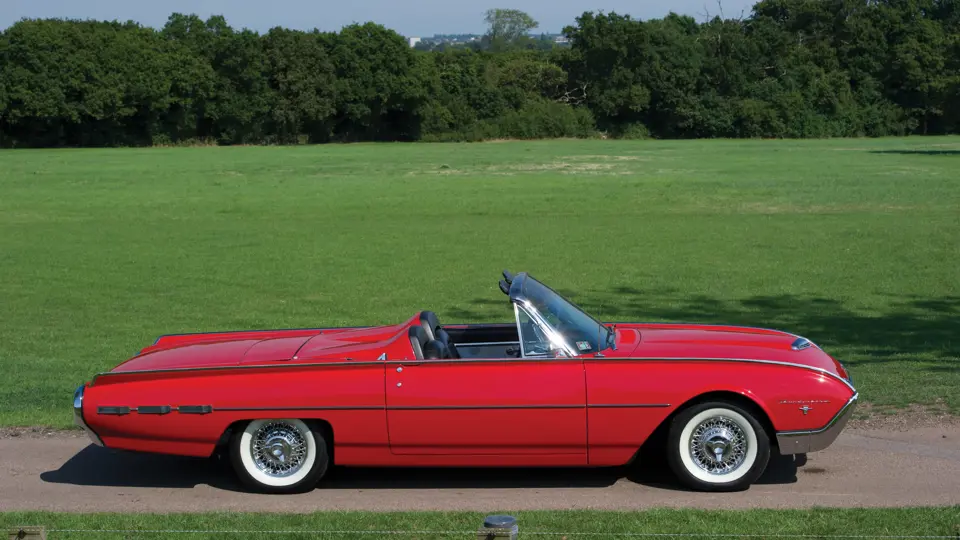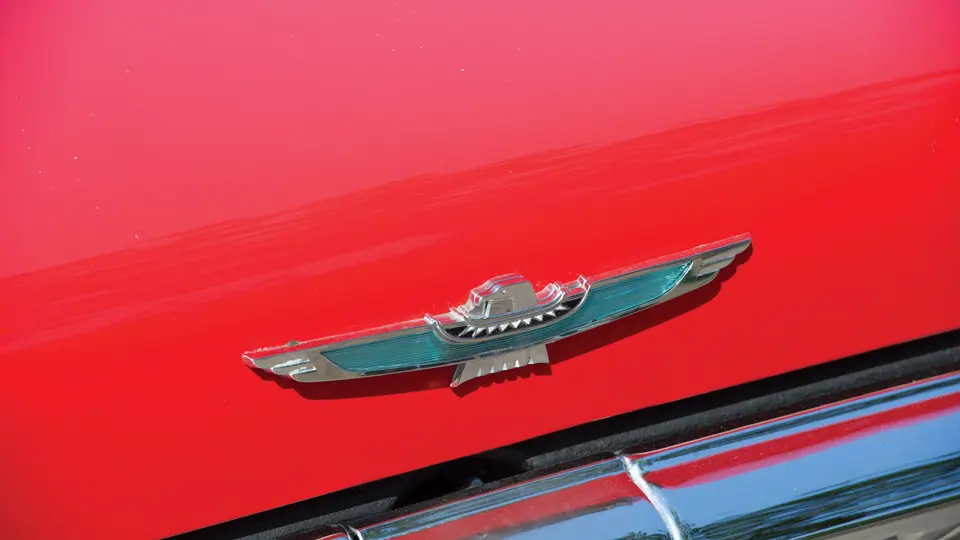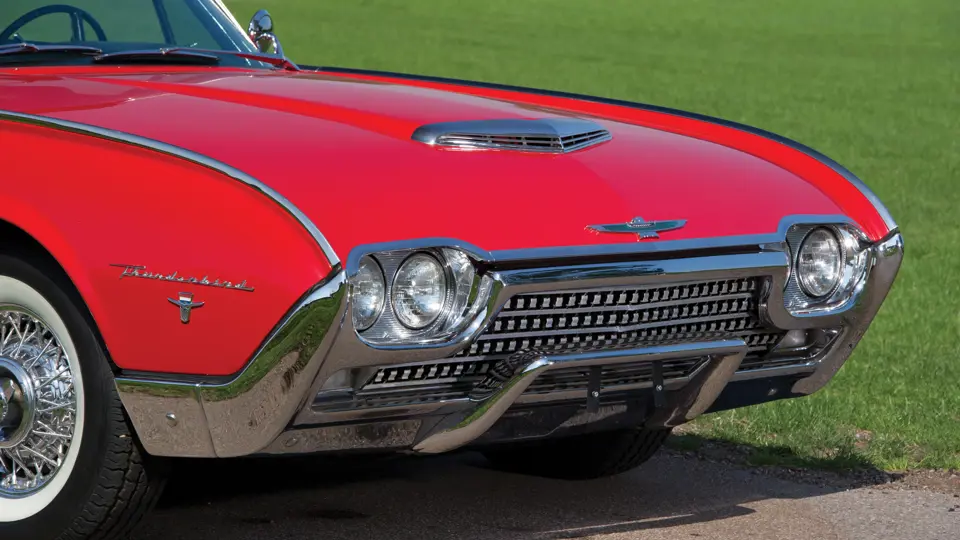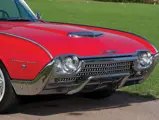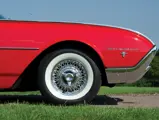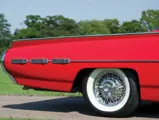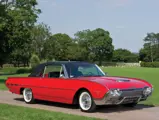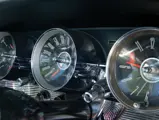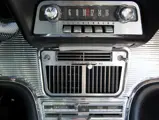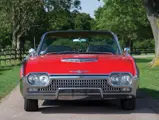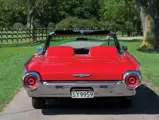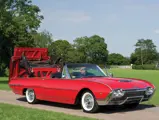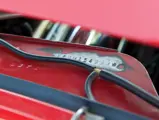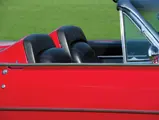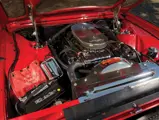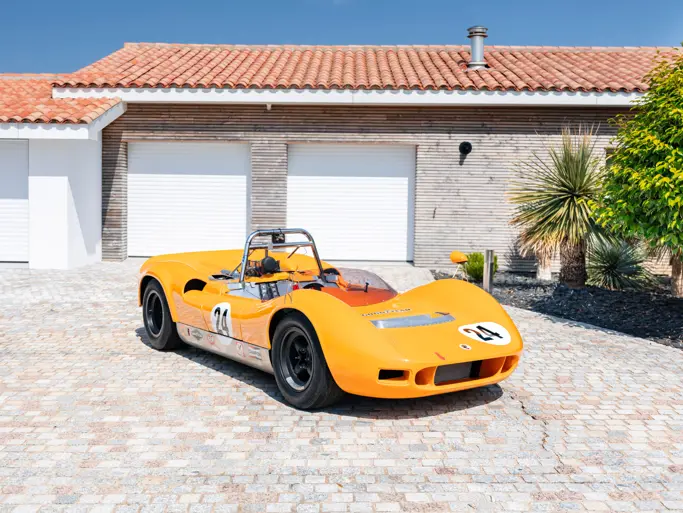340 bhp, 390 cu. in. M-Code OHV V-8 engine with three 2-barrel Holley carburettors, three-speed automatic transmission, front independent and rear leaf-spring suspension, and four-wheel power-operated drum brakes. Wheelbase: 2,870 mm
Chevrolet’s iconic Corvette may have kicked off America’s love affair with the sports car in 1953, but in 1955, many more motoring enthusiasts opted to put Ford’s new Thunderbird in their driveway instead. The luxury two-seater’s popularity grew through to 1958, when Ford added a back seat to the car, and by 1960, which was the final year of production for the second-generation “Squarebird”, the Thunderbird had outsold its rival nine to one.
Nineteen sixty-one saw the introduction of the third-generation Thunderbird, which was now much more of a personal luxury coupé than a sports car, and it also saw the minting of another nickname for the four-seater, “Bulletbird”, which was assigned for the car’s sharply pointed nose and rounded sides. Sales were strong but slowing by this time, so Ford lent an ear to some dealers’ and customers’ cries for a return to a two-seat roadster-style Thunderbird.
Lee Iacocca appointed designer Bud Kaufman to come up with a fix, and he did: a removable fibreglass tonneau that would cover up the Thunderbird convertible’s rear seats and incorporate headrests for the front-seat occupants. The cover was originally a dealer-installed option, but in 1962, it found its way onto new Thunderbird order forms as part of a Sports Roadster package, which also included a passenger-side grab bar, Kelsey-Hayes chrome wire wheels with knock-off centre caps, and a rear wing skirt delete, to clear those gaps.
Thunderbird Sports Roadster production numbered 1,427 units in 1962, but it went down to just 455 in 1963, making them rare birds indeed. Even rarer were Thunderbirds ordered with the monstrous 390-cubic inch tri-power V-8, which was designated by an “M” in the VIN, thus resulting in the nickname of “M-Code” cars. These cars breathed through a set of three Holley two-barrel carburettors and put out some 340 horsepower at the crankshaft, which is to say that they were plenty capable of shaming any Corvette-driving challengers.
Ford turned out just 37 M-Code Sports Roadsters in 1963. The car shown here is one of those, as identified by its serial number, which also includes the crucial “M”, identifying it as having been built with this most desirable engine. It is finished in the most classic colour combination of Rangoon Red over black leather upholstery, and it is equipped with such wonderful features as factory air conditioning, power windows and top, power steering, power brakes, and the chrome engine compartment “dress-up kit”. Naturally, as it is a Sports Roadster, it is fitted with the iconic Kelsey-Hayes wheels. Overall, it presents beautifully and is ready to be presented as one of the few authentic examples of this very rare Thunderbird on the European continent.





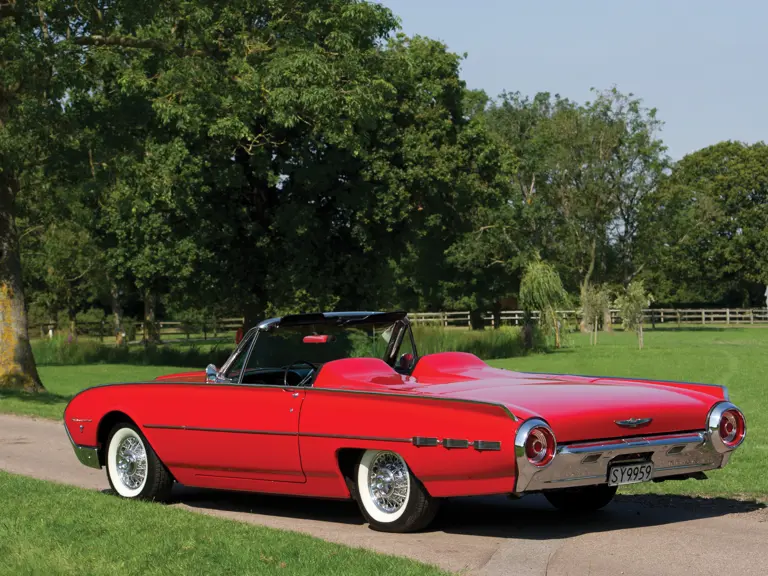
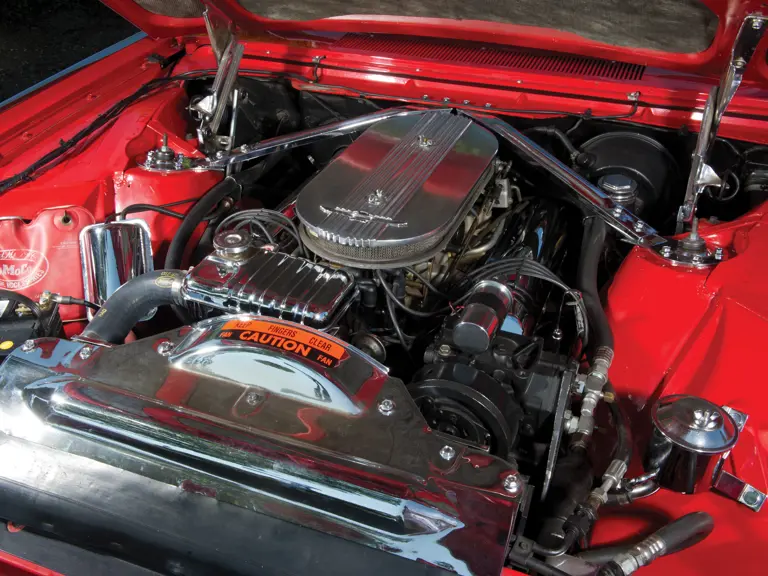
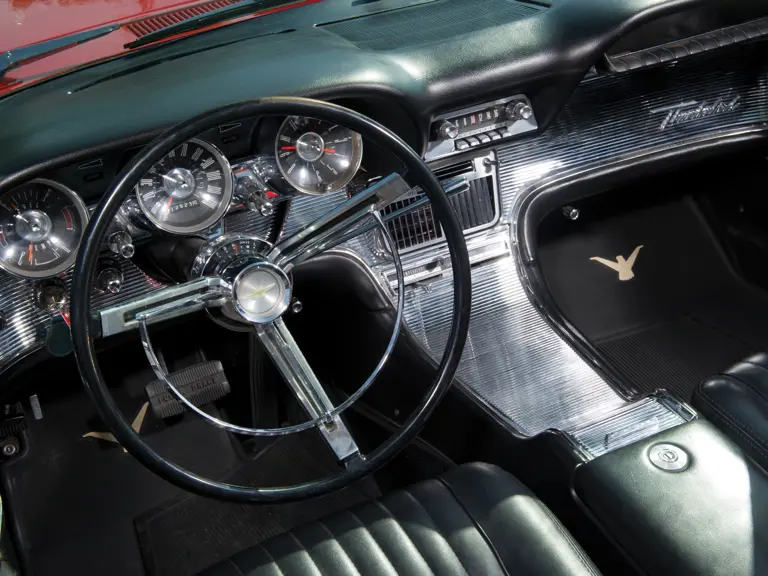
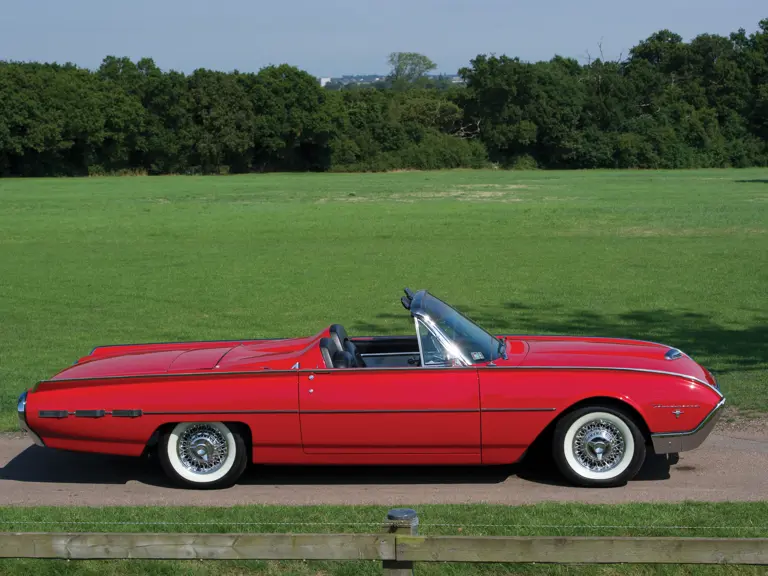

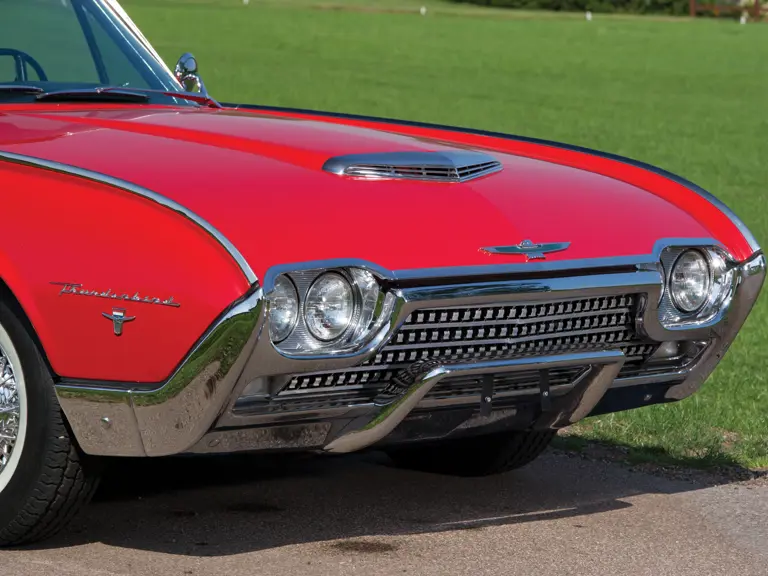
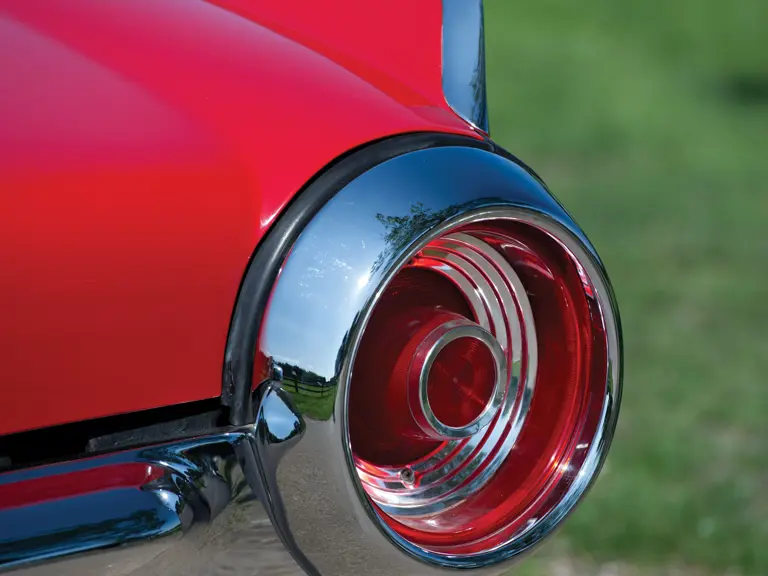
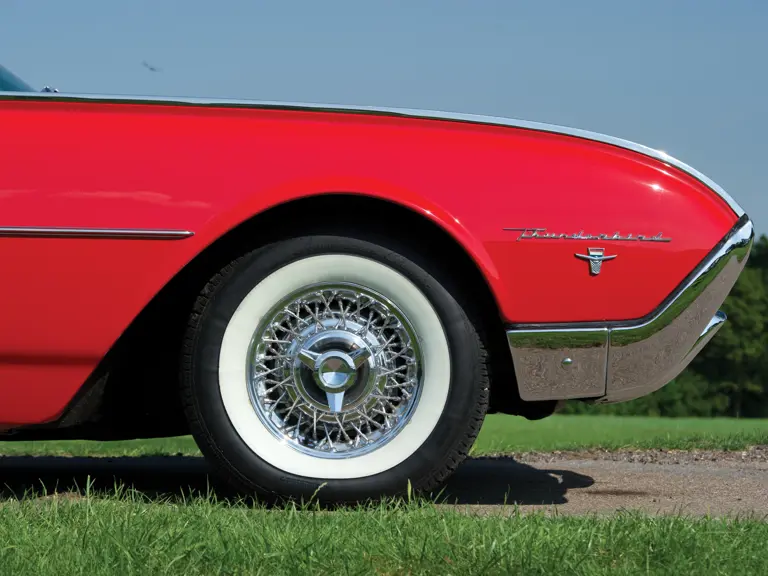
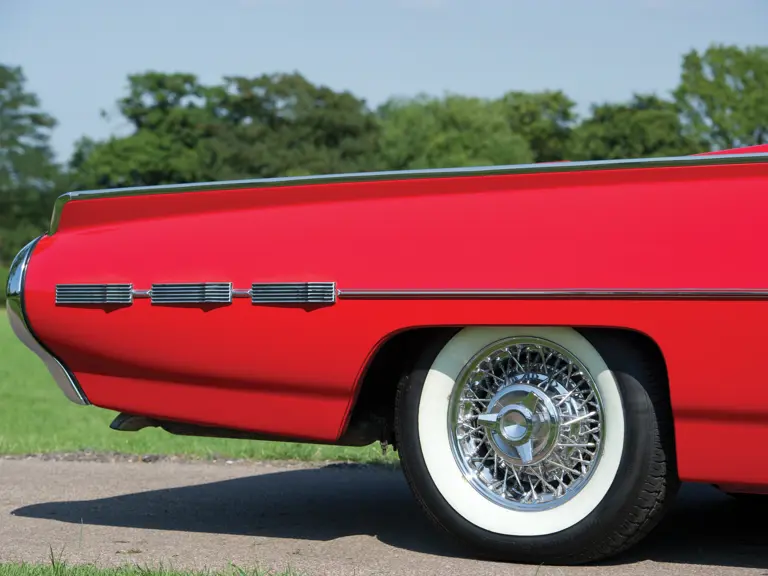
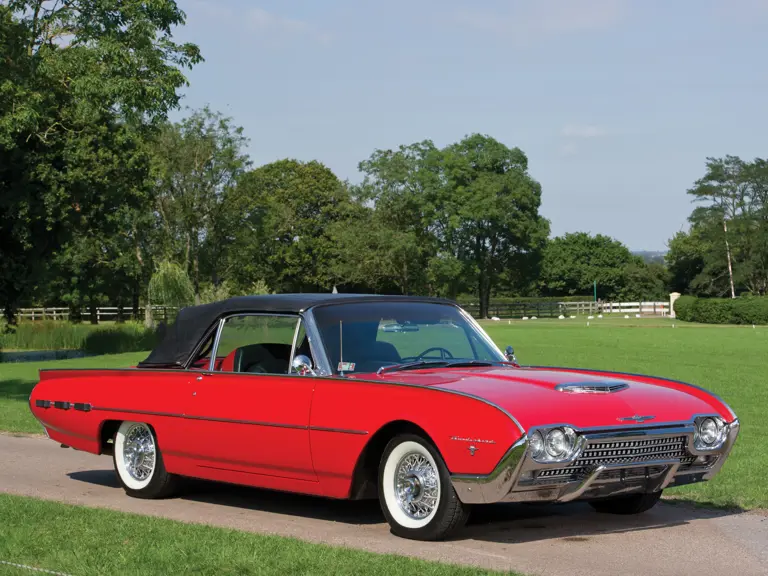
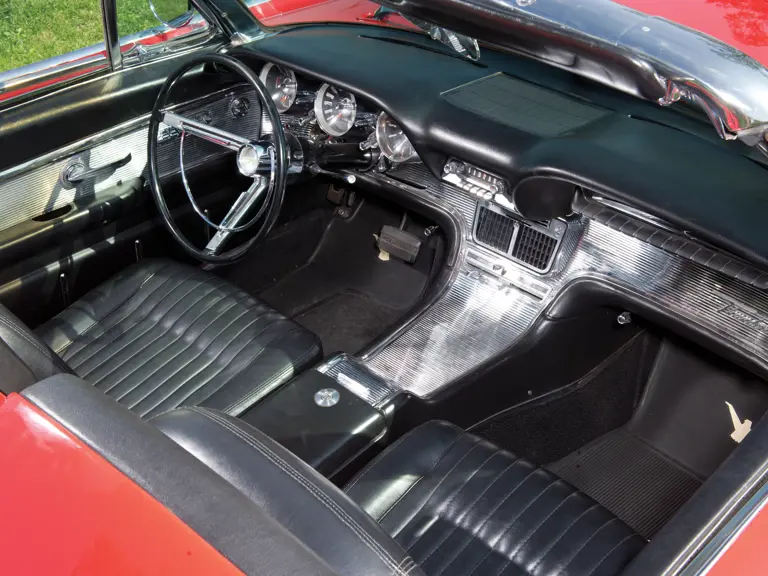
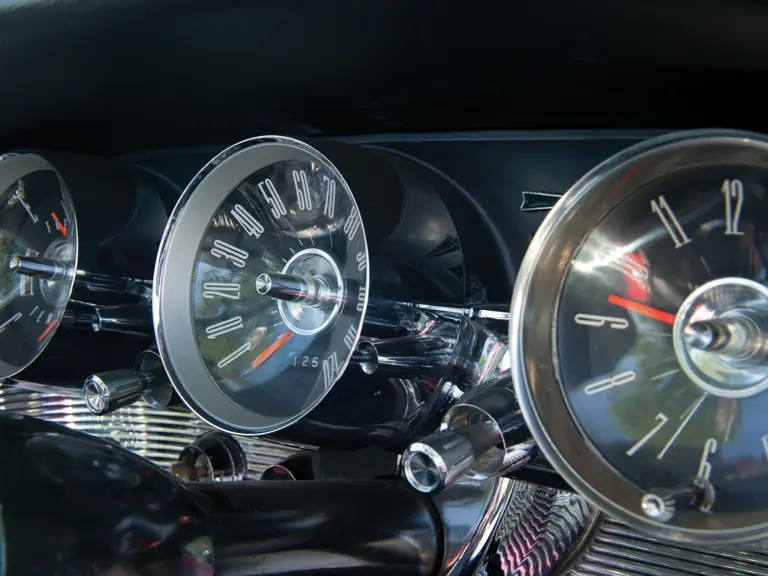

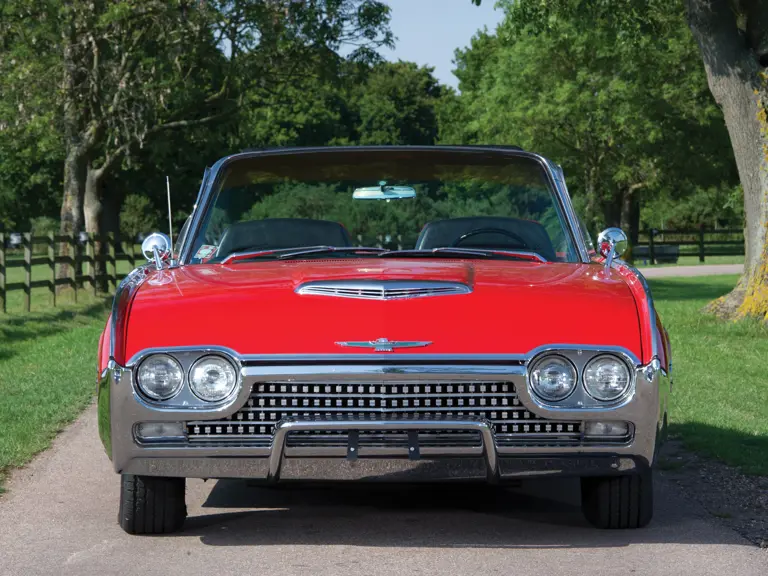
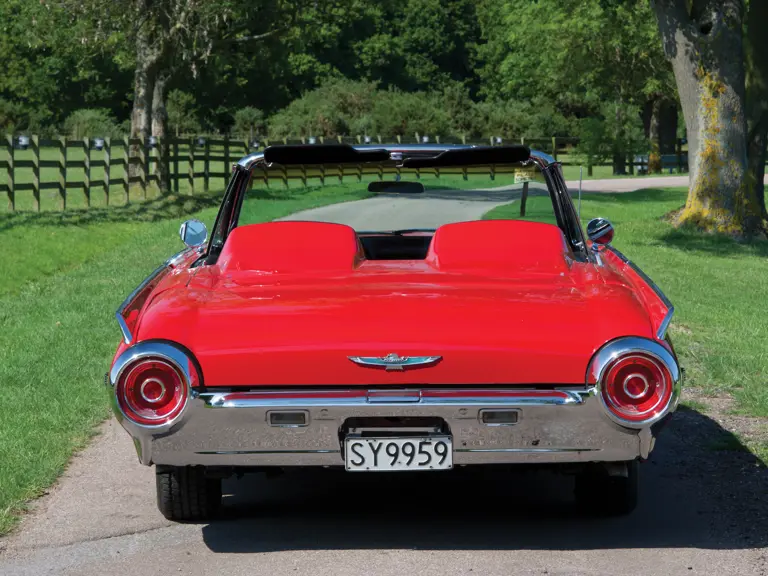

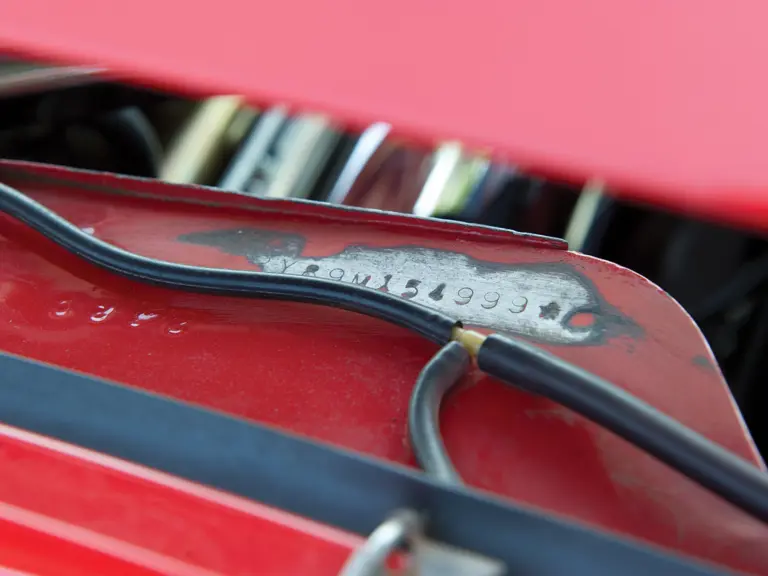
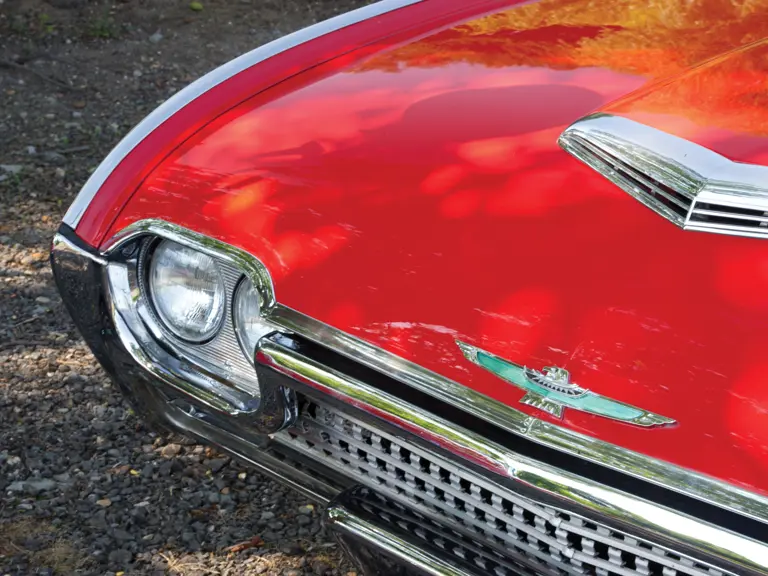

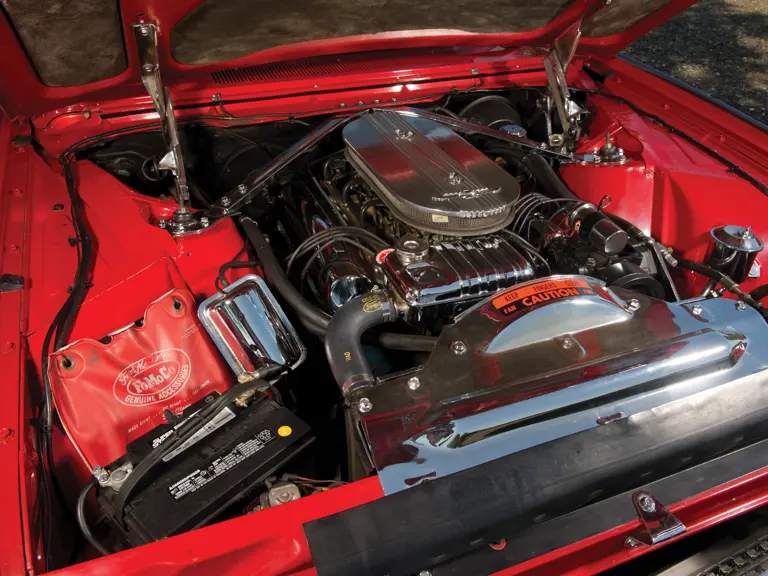
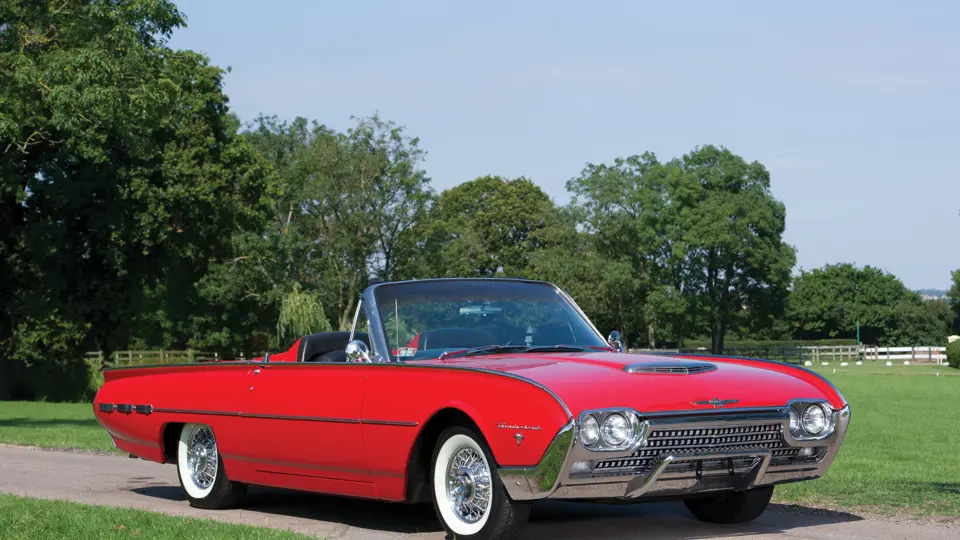
 | London, United Kingdom
| London, United Kingdom
